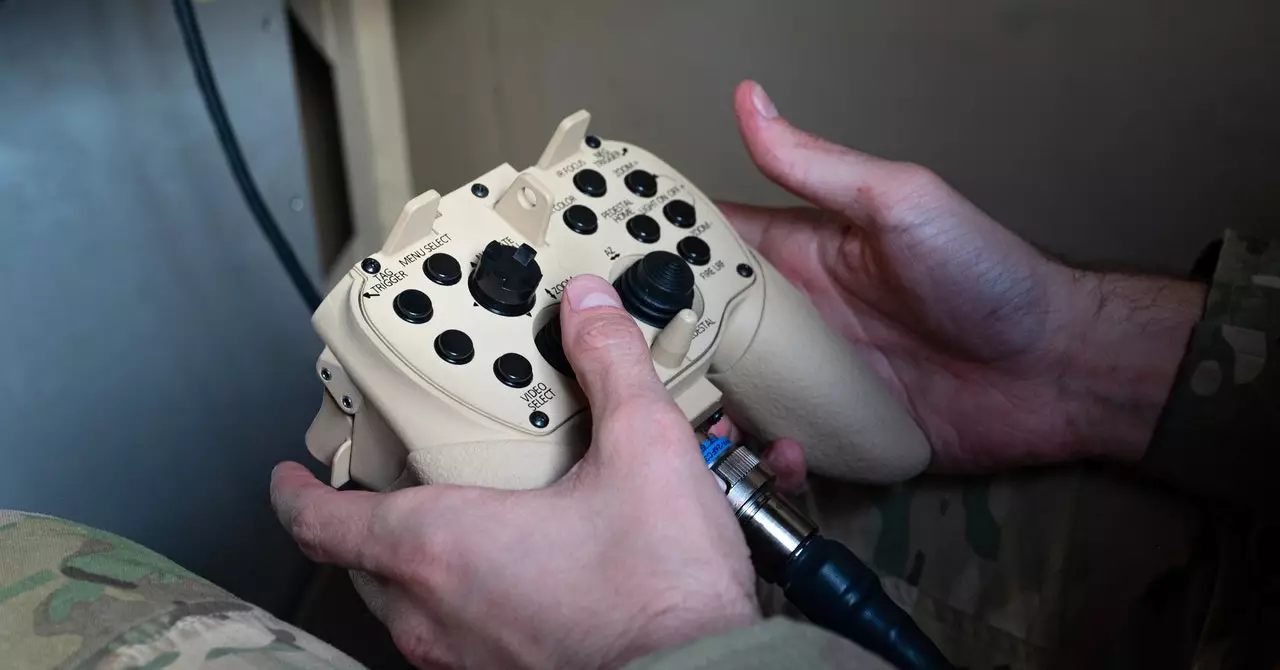As technology continues to evolve at a breakneck pace, the battlefield of the future may look strikingly different from what we envision today. One of the most captivating developments in military hardware is the shift toward familiar gaming technology in military operations. This article explores how the integration of consumer-grade controls into advanced weapon systems is reshaping the way American troops interact with their machines, enhancing operational efficiency while potentially revolutionizing combat strategy.
The traditional interfaces for military equipment have often been complex—sprawling control panels and intricate touchscreens require considerable training and expertise. In stark contrast, the U.S. Department of Defense (DoD) is adopting control units resembling the handheld devices of Xbox and PlayStation. These adaptations seem almost to democratize the control over advanced weaponry, as they leverage the innate skills developed in young people familiar with video games. This evolution signifies a practical approach where the cognitive load associated with operating sophisticated systems is reduced, paving the way for quicker decision-making and execution in real-time scenarios.
The Freedom of Movement Control Unit (FMCU) is leading this trend. Integrating lightweight and intuitively designed controls into various military applications—from anti-ship missile systems to anti-aircraft vehicles—opens avenues for agile and responsive military engagements. With soldiers already possessing a semblance of familiarity with these devices, the process of training becomes streamlined, allowing them to focus on strategy rather than merely grasping the mechanics of the equipment.
American military operations increasingly depend on adaptability, especially in rapidly changing conflict environments. Utilizing gaming technology may foster a conducive atmosphere for innovation on the battlefield. When we consider systems like the Navy Marine Corps Expeditionary Ship Interdiction System (NMESIS) or the Army’s Maneuver-Short Range Air Defense system, the FMCU provides critical interfaces that can evolve and adapt to new threats almost instantaneously.
These developments coincide with rising geopolitical tensions, particularly in the Indo-Pacific region concerning potential conflicts with China and in Eastern Europe against Russia. Here, the FMCU’s adaptability serves dual purposes—not only does it improve the immediate functional capabilities but also aligns with broader strategic goals of maintaining a technological edge. The ability to coordinate multiple weapon systems effectively and with precision is no longer just a tactical necessity; it is a strategic imperative in a world where speed and accuracy can turn the tide of engagements.
One essential feature of these new control systems is their design emphasis on resilience and operational efficiency in hostile environments. Built to withstand the rigors of battlefield conditions, the FMCUs are ruggedized versions of gaming controllers, integrating advances in human-machine interface technology. This transition echoes a broader trend toward incorporating more user-friendly designs in critical operations, ensuring that soldiers can focus on engaging with the enemy instead of wrestling with cumbersome control systems.
Moreover, as the DoD collaborates with established private sector players like Measurement Systems Inc. (MSI), this innovation points to a mutual recognition of the importance of human factors in military technology. The long-standing partnerships with defense contractors underscore how military expertise can synergize with industrial innovation to produce more efficient and soldier-friendly systems.
In a conflated era marked by technological advancement and evolving warfare paradigms, the integration of gaming-style control systems signifies a profound shift in military operations. By blending skilled design with intuitive control mechanisms, the U.S. military is setting the stage for engagements that prioritize efficiency, responsiveness, and tactical agility. This convergence of gaming technology and military application can redefine how warfighters engage their environments, ultimately heralding a new era in military strategy.
As we look to the future, it becomes essential to reflect on the implications of these advancements—not only for military effectiveness but also for the ethical considerations they entail in using advanced technology in combat. The alignment of civilian tech patterns with military applications may yield tremendous power but also invites scrutiny over responsible usage in complex geopolitical landscapes. What remains clear, however, is that the interface of war and the innovations born from gaming culture will continue to evolve in ways that challenge our conventional understanding of conflict and command.

